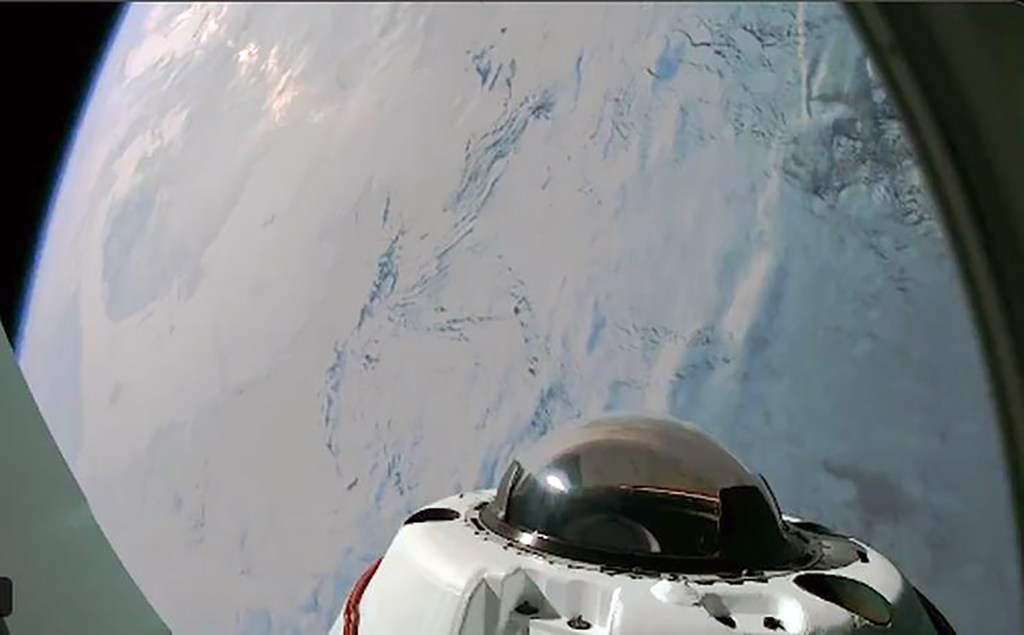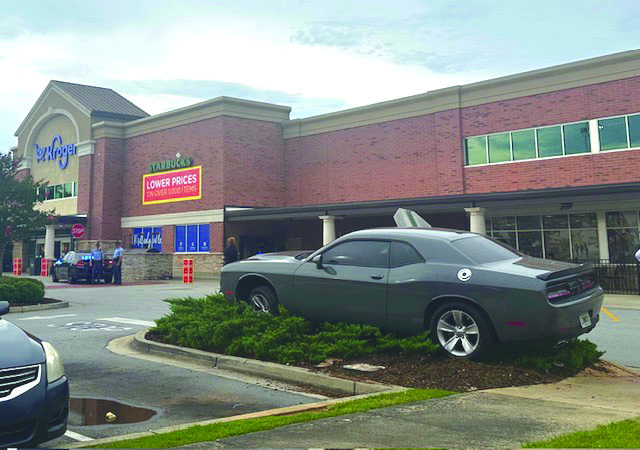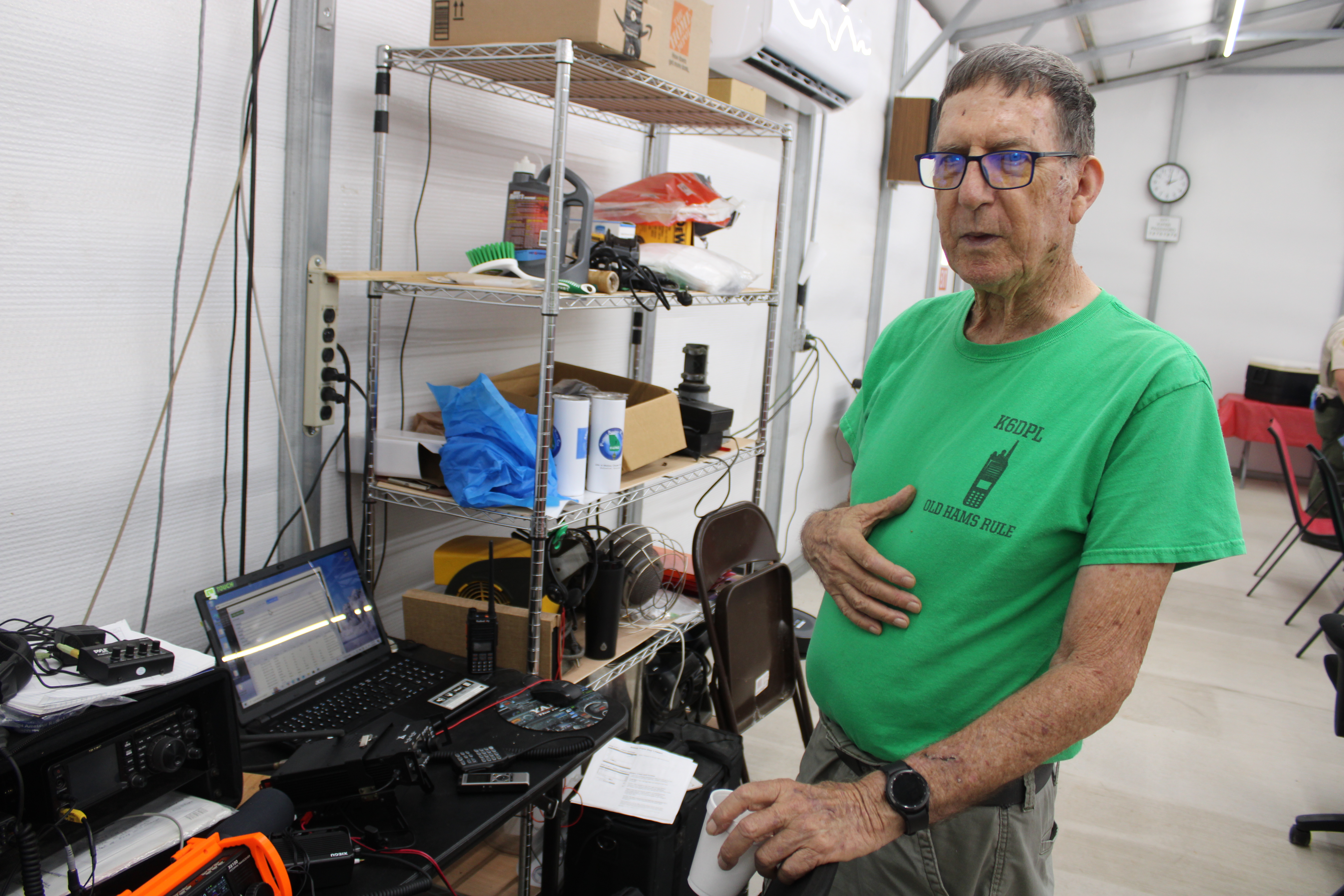OUR SPACE: Fram2 – Going where no human has gone before
Published 2:32 pm Tuesday, April 8, 2025

- A first view of Earth's polar regions from the Resilience spacecraft during the Fram2 mission. The clear viewing cupola is visible in this video screen shot. (Fram2/SpaceX)
Last week we had another exciting human spaceflight event – the privately funded Fram2 mission, launched from Kennedy Space Center on a previously flown SpaceX rocket and spacecraft. Let’s unpack what was so special about this trip! Granted, any human spaceflight mission is special and since they are far less common than other commercial launches, each one deserves its own celebration.
Fram2 is named after the Norwegian polar explorer ship Fram that made several groundbreaking journeys into Earth’s polar regions some 140 years ago. On board is an international crew of four first-time space fliers — Chun Wang of Malta, Jannicke Mikkelsen of Norway, Rabea Rogge of Germany and Eric Philips of Australia. What all of those people do have in common, however, is considerable experience in polar exploration and science.
What makes Fram2’s mission so special is its orbit. Generally speaking, human spaceflight missions are launched in an Easterly direction, in order to take advantage for the additional considerable boost the Earth’s rotation provides. An orbit’s declination is measured by its angle relative to the equator, whether they take off in a north-eastern or in a south-eastern direction. The shallower the angle is in regards to the equator, the bigger the boost is. Fram2 was in a polar orbit – at 90 degrees relative to the equator its trajectory takes it directly over the Earth’s North and South Poles.
Trending
No human-crewed spacecraft has ever been launched into a polar orbit, and so the four astronauts saw something no human being has ever seen with their own eyes — a view of the poles from orbit. Can you imagine how exciting this trip was for a group of people whose passion it is to study the Earth’s poles?
But that’s not all they will do. They will also grow mushrooms in orbit and take the first ever x-ray image of a human in space. Eric Philips is the group’s medical official, so they are all in good hands.
The astronauts all reported an extremely smooth launch, but trouble hit soon after: the dreaded Space Adaptation Syndrome, often referred to as Space Sickness. The majority of astronauts experience various degrees of this unpleasant side effect – lots of vomiting, stomach upset and general malaise akin to motion sickness. It results from the confusion the inner ear experiences in the absence of gravity. Its severity varies greatly from person to person. Some literally vomit on and off the entire time, and a lucky few have absolutely no symptoms whatsoever. Almost all of them get over it, however, as the body adapts to microgravity reasonably well. The Fram2 crew felt a lot better after a good night’s sleep in orbit!
Of course they also brought a “Zero Gravity Indicator” with them — usually a stuffed animal or toy, and who better to take on a polar expedition than Tyler the Polar Bear?
While the Earth’s polar regions are shrinking due to warmer global temperatures in the past few decades they are still vast and breathtaking. What surprised the astronauts most was the visible lack of any human influence as seen from orbit – just a vast expanse of shades of white. Large cities are perfectly visible from space, and at night most land areas become piles of glittering jewels from all the lights. There are no major settlements near the poles, and the few research stations are just too small to see.
And what a view it must have been! The Resilience spacecraft was equipped with a transparent half-dome at the tip, allowing for a perfect 360 view of the ground. At the point of this writing the exact landing date had not been determined. The mission was slated for three to five days, and much of its duration depended on the weather in the various recovery zones.
Trending
The four astronauts — like most of these privately funded missions — are in a free-flying orbit, meaning they will not dock with the International Space Station at any point. While most of them possibly could (and some of them have done so) Fram2 does not even have the option to go there, so they are on their own until splashdown. Due to this unusual orbit there were additional logistical issues associated with this mission, especially as far as the landing was concerned, but hopefully they have all arrived safely back on Earth by the time you read this.
What we already have are some absolutely stunning photos of some of Earth’s most remote and least explored regions. The poles are quite inhospitable due to the extreme weather, but remember that day and night also don’t work the way they do here at home – you have around 6 months of daytime followed by 6 months of night. However, for the Fram2 folks none of that was a problem. Their spacecraft was always comfortably warm, and they had night and day around 16 times per day!
Learn more about Fram2 at https://f2.com/ .
Beate Czogalla is the Professor of Theater Design in the Department of Theatre and Dance at Georgia College & State University. She has had a lifelong interest in space exploration and has been a Solar System Ambassador for the Jet Propulsion Laboratory/ NASA for many years. She can be reached at our_space2@yahoo.com .





